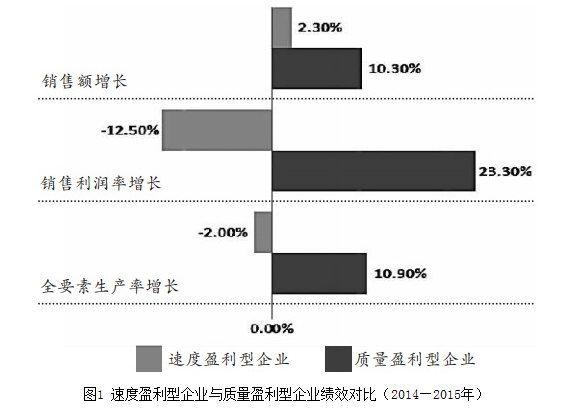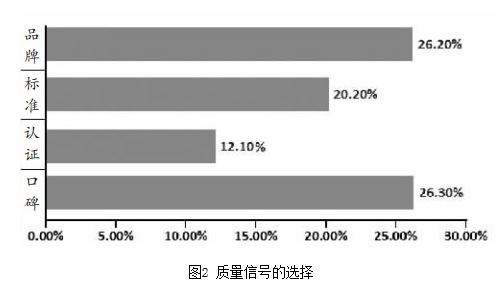On August 3, 2017, "Guangming Daily" published the latest research findings of the Institute of Quality Development Strategy. The article totaling more than 4000 words entitled "Quality Innovation Motivates Economic Transformation and Upgrading – An Analysis Based on CEES Dataset including 1208 Enterprises and 11136 Employees" was jointly produced by Prof. Cheng Hong, Jia Guodong and Luo Lianfa from China Enterprise Survey and Data Center of the Institute of Quality Development Strategy, Wuhan University. The full text is reproduced as follows.
Quality Innovation Motivates Economic Transformation and Upgrading – An Analysis Based on CEES Dataset including 1208 Enterprises and 11136 Employees
Author: China Enterprise Survey and Data Center of the Institute of Quality Development Strategy, Wuhan University
【FOCUS】
Central Economic Work Conference 2016 pointed out that "the ultimate goal of supply side structural reform is to meet the social demand. The main focus is to improve the supply quality and the fundamental way is to deepen reform". In 2017, General Secretary Xi Jinping once again stressed that "efforts need to be made to improve economic quality and efficiency" at the Central Financial Leadership Group meeting. To improve the quality of supply side, we have to use quality management system, and more importantly, to increase development interests of micro-business entities through quality innovation.
Quality innovation mainly refers to the use of technology, management, human capital, entrepreneurial spirit and other elements to enhance the inherent characteristics of products and services so as to better meet the consumer demand of the market and ultimately achieve more profits.
In order to get a better understanding of the quality innovation condition of China's enterprises, the Institute of Quality Development Strategy made contact with the Chinese Academy of Social Sciences, Stanford University, Hong Kong University of Science and Technology and other units. During 2014 to 2016, they conducted a large scale survey called “China Employer-Employee Survey (CEES)”on Chinese manufacturing enterprises, including investigations into labor forces as an importance factor of quality innovation. CEES research reclaimed valid questionnaires from 1208 companies and 11,136 employees. The survey include the quality of innovative elements of the enterprise, such as entrepreneurial capacity, human resources and skills, technological innovation, management capacity, R & D investment, international standards, voluntary certification and other indicators as well as the results of quality innovation including qualification rate of products, sales return value, new product output and other indicators. At the same time, in order to fully reflect the role of quality innovation, CEES also investigated into the sales volume, profit margins, total factor productivity and other performance indicators of the firms.
CEES shows that under the condition of market competition, the quality innovation of manufacturing enterprises has greatly improved the performance of enterprises, which is the feasible way to motivate transformation and upgrading. The overall quality innovation capacity of Chinese firms is relatively low. It is urgent to increase the investment on quality innovation elements, to reform the quality management system. By doing so, the energy of quality innovation can be effectively released in support of economic transformation and upgrading.
1. Quality Innovation Significantly Improves Business Performance
The goal of quality innovation is to promote the enterprise to achieve higher proficiency. Therefore, CEES mainly focused on the relationship between quality innovation capacity and business performance. According to the differences of quality innovation capacity, the enterprises can be divided into two categories including "profitability model by speed" and "profitability model by quality". Two types of enterprises differ significantly in performance indicators such as sales, profit margins and total factor productivity.
There are two different profitability model among enterprises. The research found that a class of enterprises faced profit decreasing while the other types of enterprises remained stable growth under the same macroeconomic context. The former follows the “profitability model by speed” which mainly relies on low-quality and large-scale elements of inputs while the latter follows “profitability model by quality” which basically rely on entrepreneurs, human resources, technology, standards, brands, certification and other elements. CEES research showed that enterprises of “profitability model by speed” accounted for 59% while enterprises of “profitability model by quality” accounted for 41%. The former still remained the majority in China, which was the concrete manifestation of relatively poor quality of supply side.

2. Opportunities and Challenges Facing Quality Innovation
Since the new normal of China’s economy, CEES research showed that the enterprises were faced with the opportunities including steady improvement of product quality, formation of quality signal and upgrading of quality capacity resulting from the use of intelligent equipment. Also, they faced other challenges of slow updating products, poor services, lack of craftsmanship, low management efficiency, etc.
Steady improvement of product quality
Enterprises consciously make market-oriented quality signals towards consumers

Enterprises accelerate the speed to use intelligent equipment and robots to increase the reliability of quality
3. Paths and Methods to Improve Quality Innovation Capacity
CEES research and the practices of China's economy have proved that the improvement of micro-level factors including entrepreneurial ability, labor skills, technical ability, management ability and "Learning by Doing" ability can significantly increase the quality innovation ability and macro-factors of the reform of quality government governance can effectively release the potential of quality innovation of the enterprises. Efforts can be made as follows.
To accelerate the transformation of entrepreneurs in order to improve the allocation capacity of quality innovation.
To improve the labor skills so as to make up the elements of quality innovation.
To continuously increase the intensity of technological research and development in order to improve the output efficiency of quality innovation.
To actively introduce quality innovation system so as to improve the management efficiency of enterprises.
To strive to strengthen the "Learning by Doing" mechanism in order to improve the performance of quality innovation.
And to continuously promote quality management reform so as to build a basic platform for quality innovation.
(Author: Cheng Hong, Jia Guodong, Luo Lianfa from China Enterprise Survey and Data Center of the Institute of Quality Development Strategy, Wuhan University. The research is listed as Important Project of Philosophical and Social Science Research Sponsored by the Ministry of Education [15J ZDH023]
Source: "Guangming Daily" (NO.11 edition on August 03, 2017)
Original Link:http://epaper.gmw.cn/gmrb/html/2017-08/03/nw.D110000gmrb_20170803_1-11.htm#